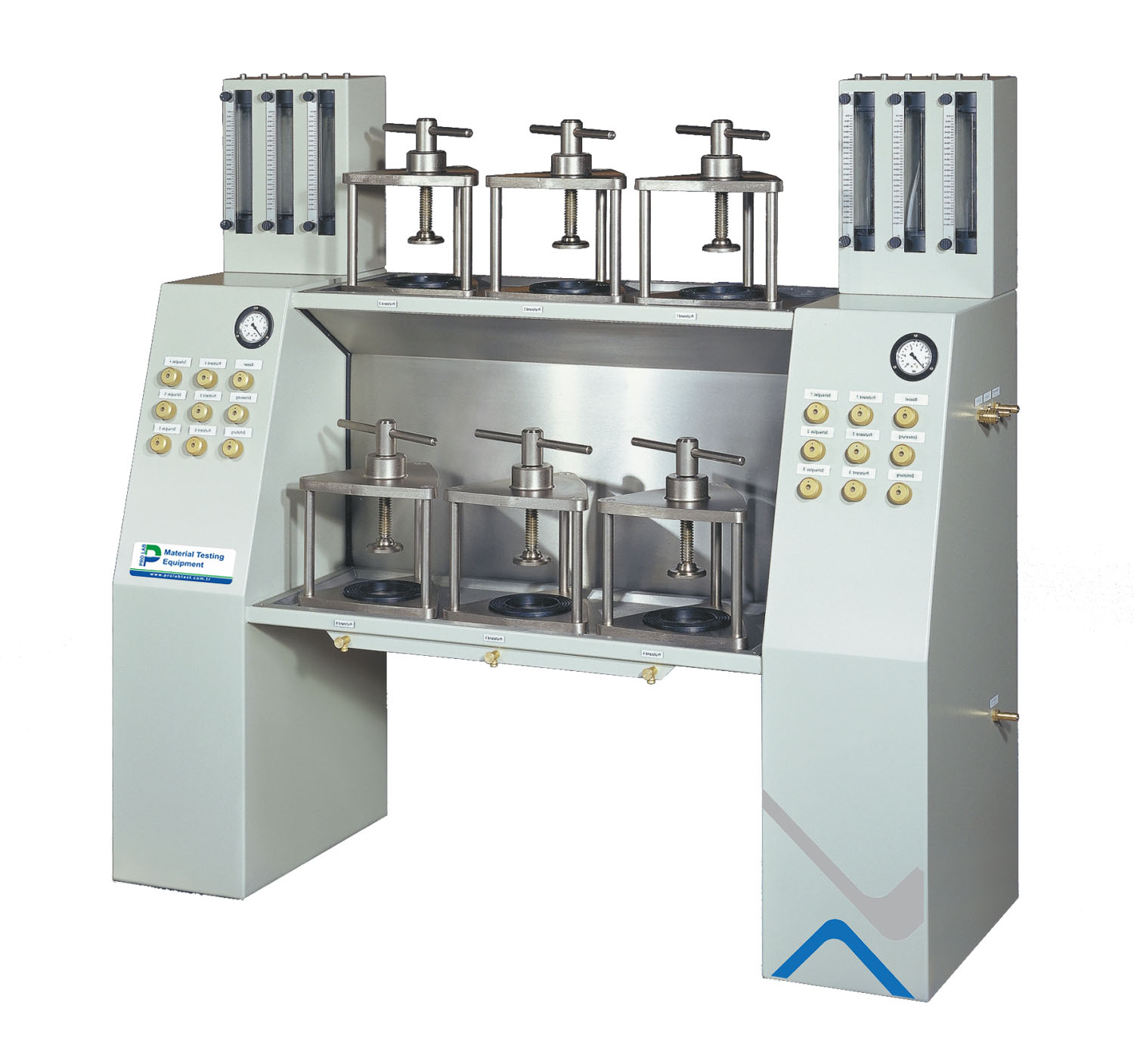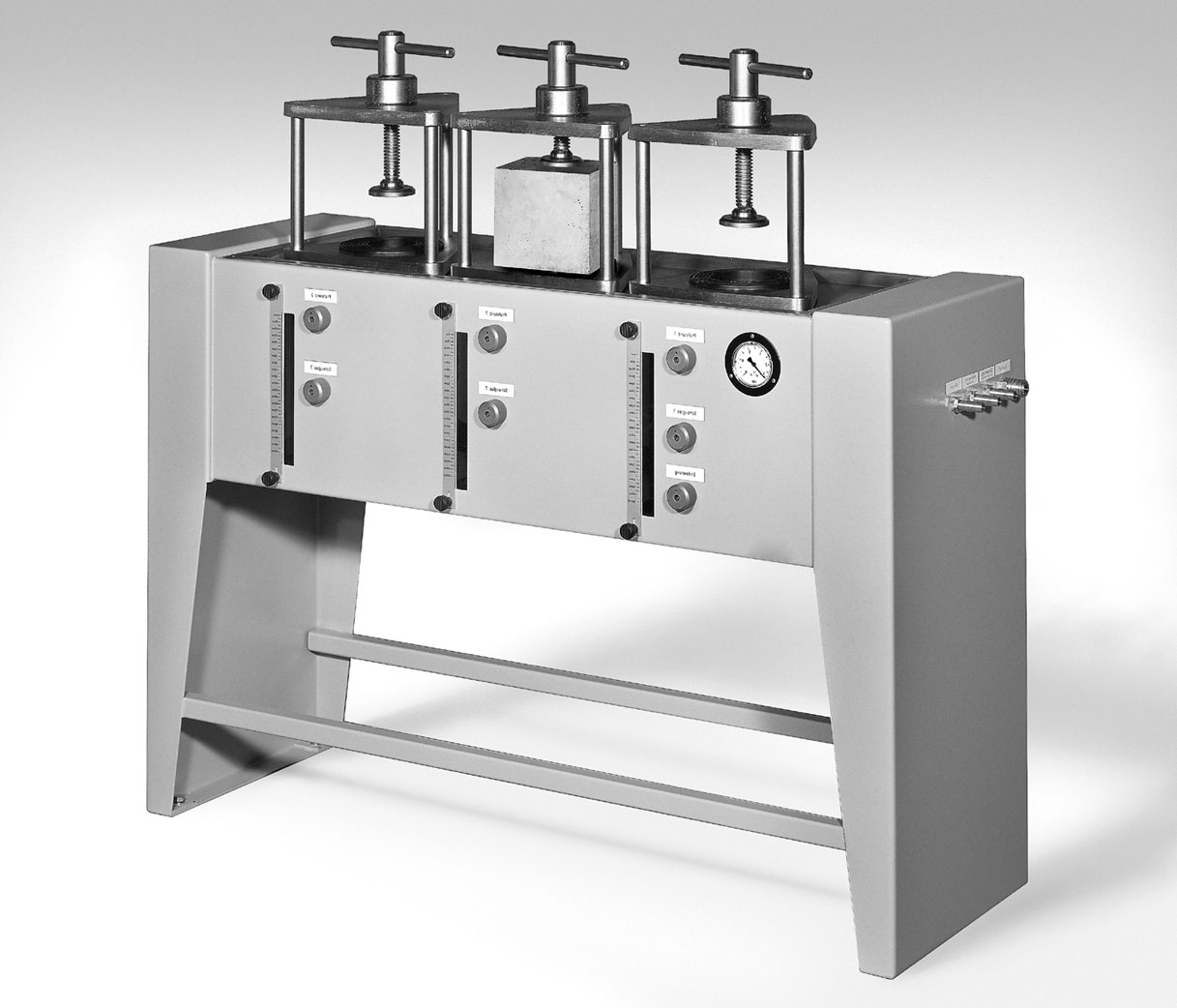


The test is performed by clamping the specimen – cubic, cylindrical or prismatic of length of edge, or diameter not less than 150 mm – between two flanges with special circular gaskets. The water, under controlled pressure, is then applied to the surface of the concrete specimen.
The penetration of water is measured, after the testing period, by breaking the specimen.
The quantity of penetrated water can also be measured through the graduated burettes fitted on top of the apparatus.
The apparatus consists of a robust steel frame with clamping system, incorporating the hydraulic circuit, valves, gauge to check the water pressure and measuring transparent burettes mounted on top of the apparatus.
The clamping system can accept cube or prismatic specimens up to 200 mm side and cylinders up to 300 mm height.
The test is performed by clamping the specimen – cubic, cylindrical or prismatic of length of edge, or diameter not less than 150 mm – between two flanges with special circular gaskets. The water, under controlled pressure, is then applied to the surface of the concrete specimen.
The penetration of water is measured, after the testing period, by breaking the specimen.
The quantity of penetrated water can also be measured through the graduated burettes fitted on top of the apparatus.
The apparatus consists of a robust steel frame with clamping system, incorporating the hydraulic circuit, valves, gauge to check the water pressure and measuring transparent burettes mounted on top of the apparatus.
The clamping system can accept cube or prismatic specimens up to 200 mm side and cylinders up to 300 mm height.